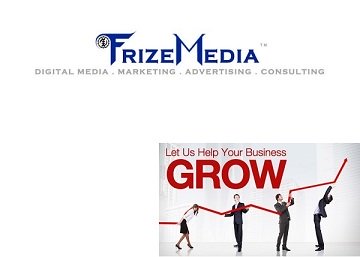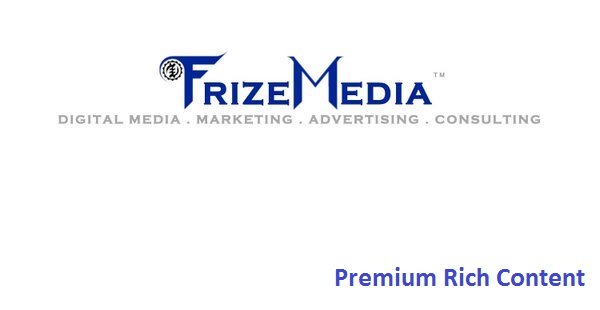Advertising Design
Photo ID Design
Here is an advertising design idea that will challenge you to make imaginative ads rather than boring ones. I call it the "Photo ID Design" and it is a very useful device if you create advertising for your company or organization. It is one of the easiest and most effective ways to create a striking ad, banner or poster. And it will almost always give you a result that gets noticed. Consider the photo id. Think about a "photo id" for a minute. Its most dominant feature is the photograph. The other elements on the card "support" the photo -- the person's name, address, or ID number.

These things are not necessarily less important than the photo. But the photo is clearly the main element. It is what the photo id is "about", and that is clearly reflected in the graphic design of the card. If you are not used to thinking of graphic design as related to function, this may seem like an overstatement -- "Hey, it's just a card with a picture on it." But think about it for a minute. A photo id has the specific job of identifying a person.
That makes the photo the most important element on the card.
So it stands to reason that the photo should be given the most attention. Make the photo the dominant element. When
you apply the photo id model to a print ad, poster, billboard, banner
design, or even a TV ad the result is usually pretty straightforward. You assume the dominant element in the piece will be the image -- the photograph.
And you also assume the photograph will be the main "identifier" — the thing that defines the look and even the content or theme of the piece. For instance, you find a photo of a cool looking guy wearing sun glasses. And that image fits the message you are trying to convey in your ad. Serious advertising designers may object that this turns the usual communication process upside down. They might say, "You should always start with your selling message, and find elements that illustrate that message."
We Are Helping 1000 Businesses Amplify Their Online Presence
For instance, if you want to sell "pet care" products, you should begin with the theme you want to communicate, and then find elements that illustrate that theme. Say your theme is something like "Our pet care products make happy pets." This theme would then suggest various ideas for photographs and headlines. Of course this is nice in theory, but in actual fact, advertising is rarely that straightforward. In reality what usually happens is that you start out with a fairly specific idea ("Our pet care products make happy pets.")

As you try to develop it you realize it doesn't quite work or you can't find the photograph you had in mind. Then as you're leafing through the pile of available "pet care" photos you see one that evokes an interesting response. So you modify your original concept to fit the available photograph. In other words, the photograph has become the "organizing theme" for the ad. If you still think this distorts or perverts the communication process, think about all those cleavage pictures on the front of women's magazines. The cover designer knows that cleavage sells magazines. So the photo is the starting point. The rest follows.
Elements of the Photo ID Of course there are no rules about what elements your banner or poster should include, but generally they should be as follows:
1. Product photo or photo collage
2. Main Headline
3. Product Description or sales pitch
4. Company Identifier (Logo, address, etc.)
Anything more than this will tend to make it overly busy. This is especially the case with posters, billboards and banners which are usually meant to be viewed from a distance. You should not try to convey detail. Just your primary selling message, and perhaps an overall image.
Creativity is always important An important way in which a "photo id" is different from an advertisement is that it lacks the creative mission we normally associate with ads. We don't expect ads to be just a picture of the product, or the store front, or of the company president. We expect them to be persuasive -- to "sell" the product or idea -- and we normally assume that takes some creativity.
In fact, one of the problems with the photo id is that we may end up using it as an uninspiring formula for cranking out ads. We may slip into the habit of relying on the format -- dominant photo, major headline, sales pitch, company identifier -- and just assume it is unnecessary to use our imagination. We may think it is not necessary to create an interesting headline, for example, or look for a striking and memorable photo. In other words we often settle for the ordinary rather than coming up with something creative. We settle for a boring description of the product rather than an imaginative statement of what it can do for me, what problem it can solve, or how much money I am going to save if I buy it. As a general rule, in advertising creativity is almost always better than the lack of it.
Of course, this is difficult to prove. And even worse, many people claim they have no creativity in them, so they think this excuses them from trying a little harder to come up with an interesting headline idea or slogan. But even if you are "creatively challenged" you should still try just a little harder. Because in advertising it really comes down to this: "Do you want your ad, your poster, your billboard, or your banner to be effective or not?"

Creative Advertising Techniques For Your Small Business
Are You Advertising In Your Rss Feed?
Creating An Effective Resource Box That Makes People Click
Affiliate Marketing Tips And Guide
InternetBusinessIdeas-Viralmarketing Home Page
Tweet
Follow @Charlesfrize
Small business advertising: If you run a small business, advertising costs must be figured in as part of your overall expenses. If you have received quotes for phone directory ads, business association block ads, and mostly any other print media, these costs are quite high. So, what if your budget is small, perhaps negligible? Will you be left outside of the small business advertising arena or are there other avenues to help you get the word out? The answer in one word is: yes. Let’s explore ways you can “get the word out” through online means…yes, via the internet! The ascent of internet use has spawned an entire industry with it. please read more...











New! Comments
Have your say about what you just read! Leave a comment in the box below.